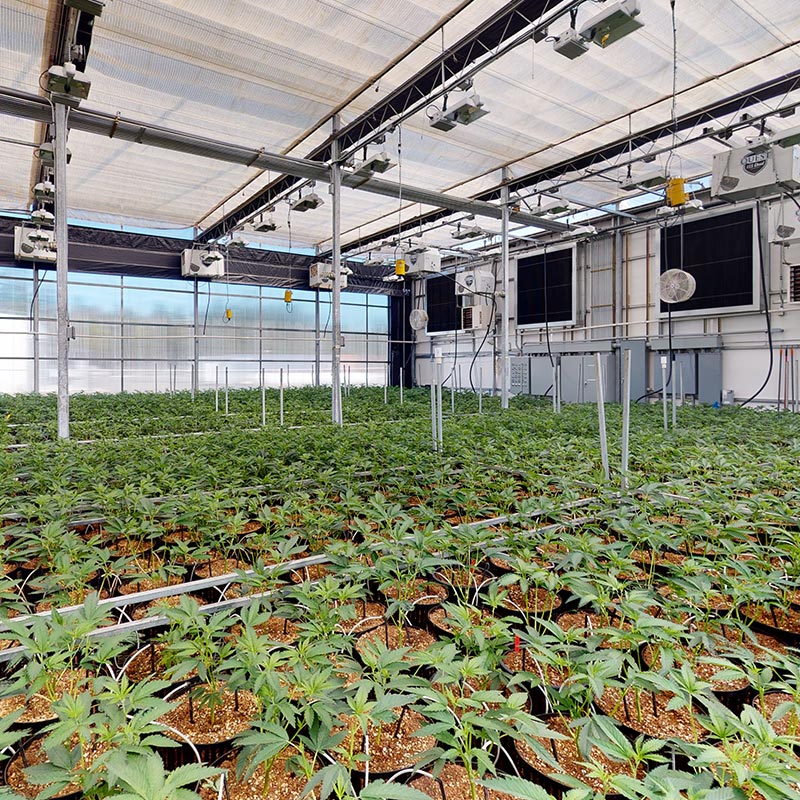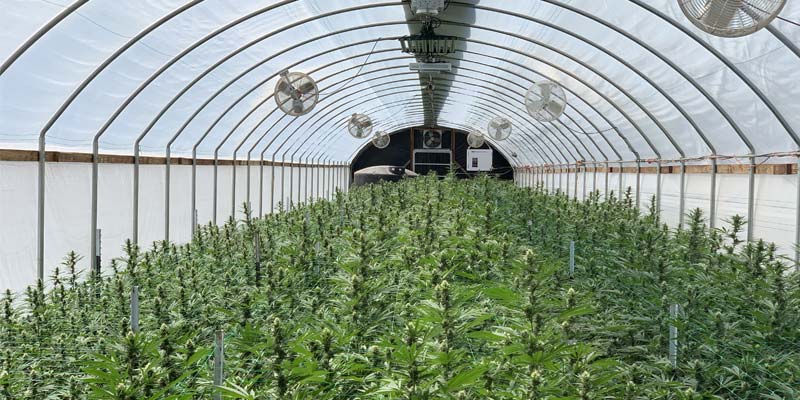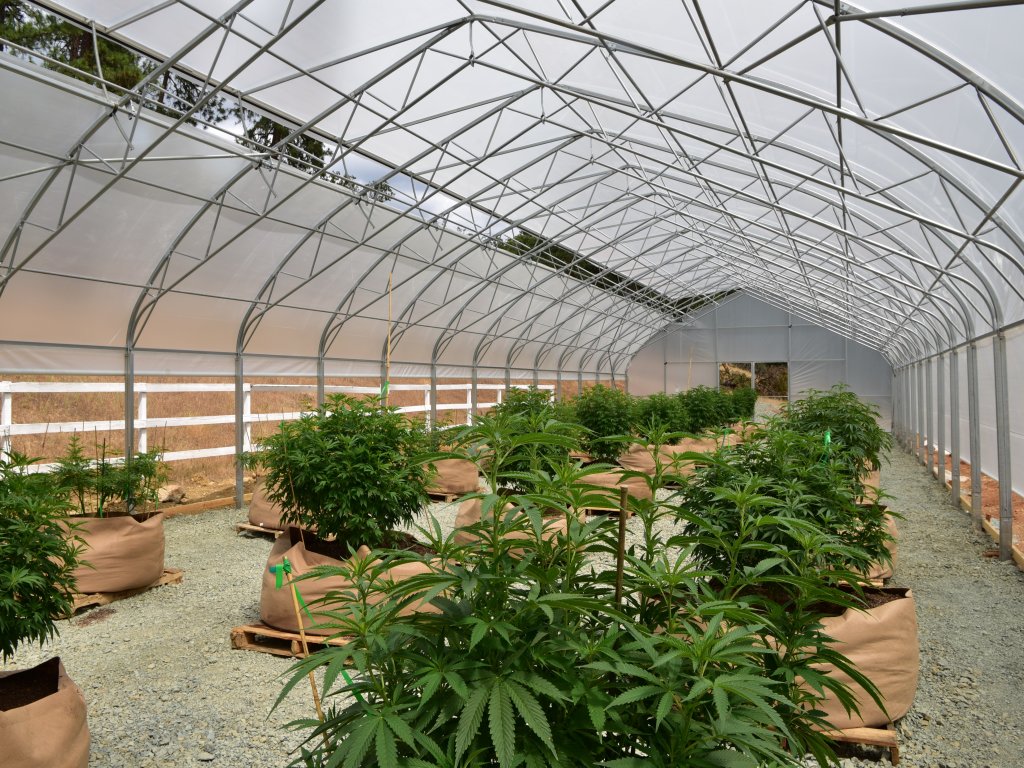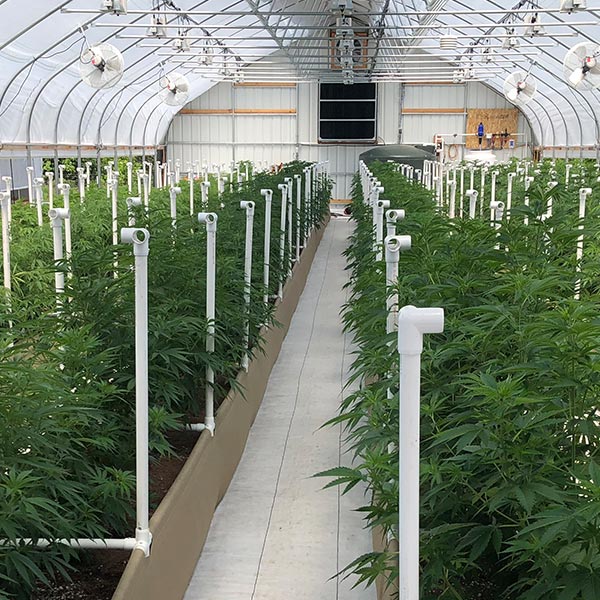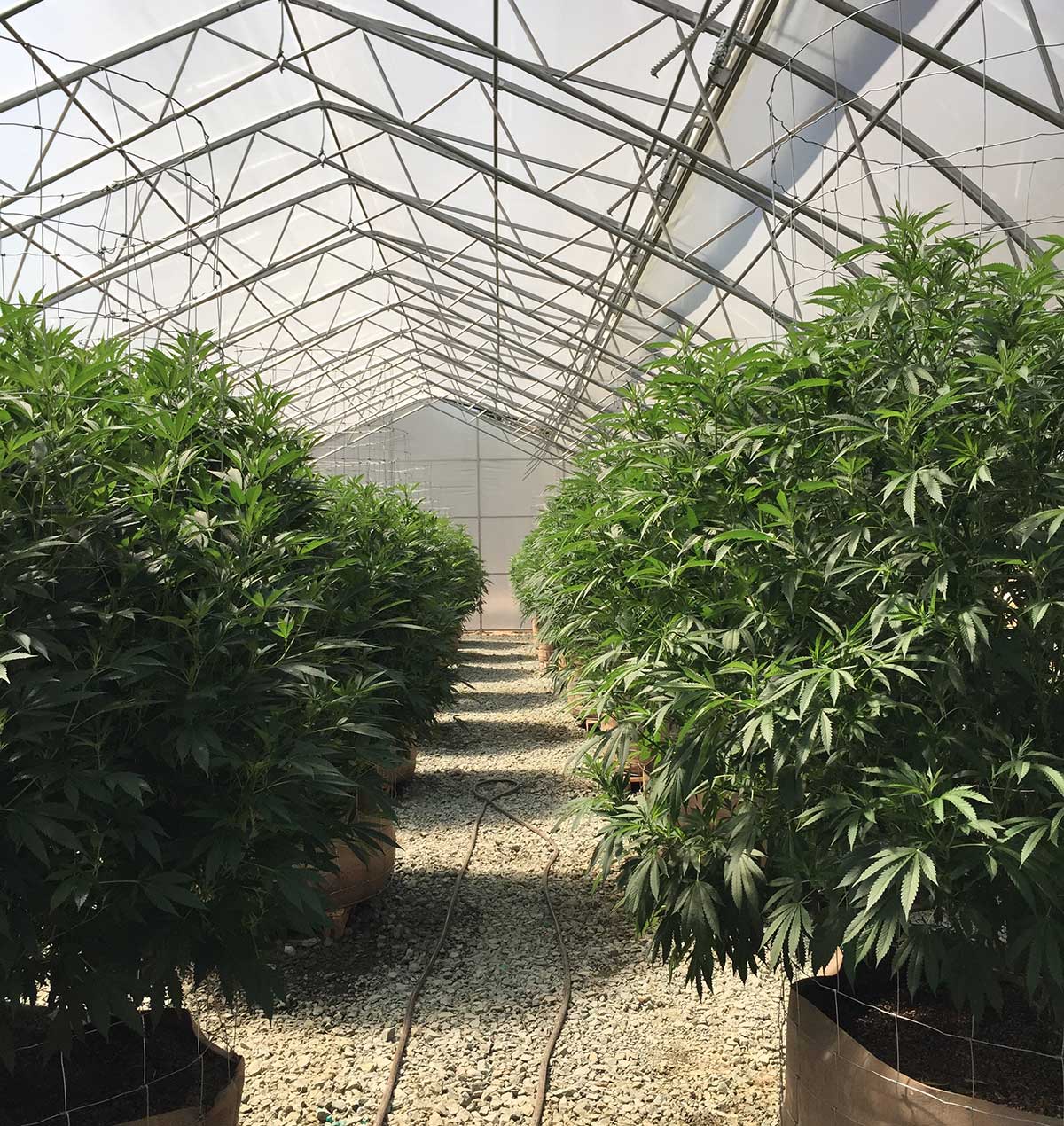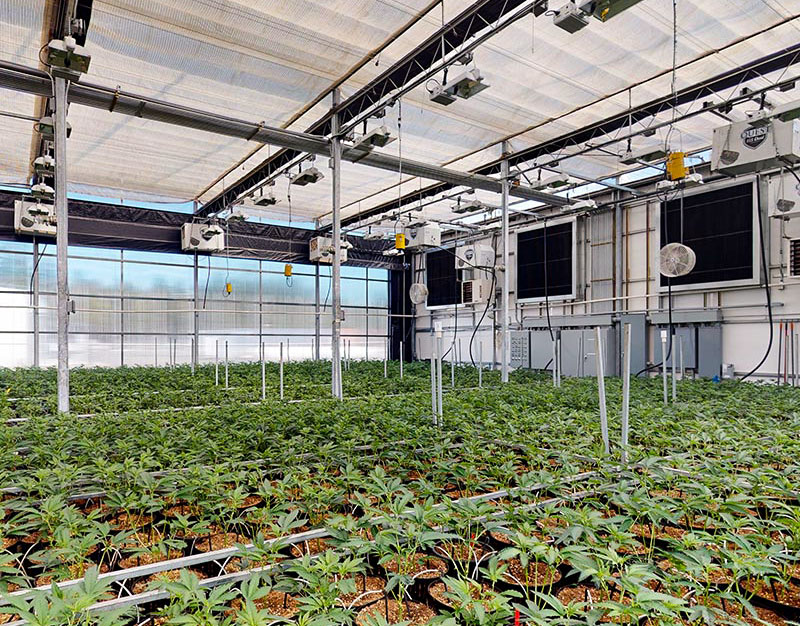
17 Jun Greenhouses For Growing Cannabis: 3 Must Have Considerations
Cannabis is often referred to as “weed†and, although it does grow like a weed, you’ll grow a poor quality product unless you take very good care of your cannabis plants throughout the cultivation (and curing) process. As the US cannabis market matures, so does the competition for high grade cannabis and doing so with minimal upfront costs and low ongoing overhead. In this blog post/YouTube video we’re going to go over how to use science and automation to help ensure your commercial Cannabis greenhouse produces the best possible results.
There are many factors to consider when setting up a growing operation, from choosing the correct greenhouse for your property and needs, to what equipment and climate control options you choose to maintain an ideal environment. Whether you’re planning a budget medical marijuana greenhouse, or a large commercial greenhouse, these are the essential factors to focus on.
(Check out our Youtube page (like and subscribe) for more detailed topics or visit our blog.
1. DESIGN AND STRUCTURE STRENGTH
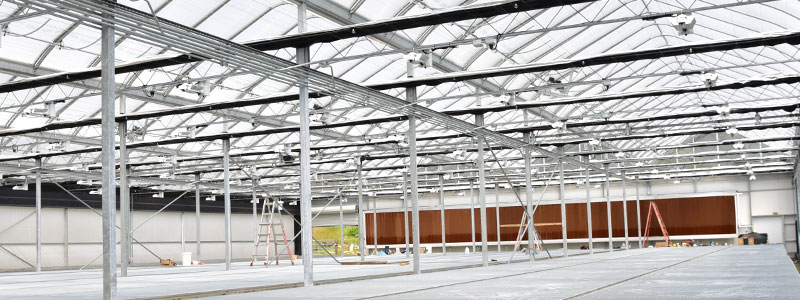
While the majority of US greenhouse Cannabis cultivation practices began in California, it does not mean those same principles and greenhouse designs will work in other states like Oklahoma or the northern states. In fact, we often hear of the california style hoop houses caving in and or otherwise flying away in storms. Choosing a cannabis greenhouse that is engineered for your property and specific climate conditions should be the first thing you do.
- Do you need an engineered structure? All states differ in building code regulations and permitting requirements. Some states will have a number of counties that will allow farmers to build greenhouses without additional permitting if their property falls within an agricultural exemption, while many other states will have strict requirements for permitting your greenhouse. Understanding this is critical for Cannabis growers in order to avoid fines and wasted time for putting up a non-permissible structure. At Fullbloom we have AG exempt greenhouse options, and structures that can handle extreme wind and snow loads with engineer-stamped plans available.
- Does it have enough room for your plants? Cannabis needs room to grow vertically, and sometimes horizontally depending on the strain and your growing preference. Many successful greenhouse cannabis growers want to use grow lights or elevate their plants onto benches and raised beds. If the greenhouse you buy has an interior curtain or peak height that is 9’-10’ft off the ground, you will not be able to use high strength grow lights during the winter or veg periods without burning your plants. Unfortunately many of the greenhouses on the market right now are designed for small fruiting plants and the sidewalls, curtain height, and engineering are not intended for Cannabis. At Fullbloom, we currently have the highest ground to curtain clearance and sidewall options available.
2. AUTOMATION SYSTEMS

Removing the risk of human error goes a long way towards having a successful cannabis harvest. There’s a lot of equipment that functions best when automated to work together, and there are some things that will still need the touch of a grower’s green thumb.
- Climate Control Systems: Cannabis will produce a higher quality product if the plant doesn’t have to fight against big swings in temperature. An ideal growing environment maintains a temperature around low to mid 70℉ with a variance of no more than 20° in either direction. Additionally, too much humidity build up can cause powdery mildew to form and break out. Thus, every good cannabis greenhouse should have an automation control computer and components to help maintain a uniform and ideal environment. The right automation suite will communicate between all of the equipment in your greenhouse to make sure it’s all working together to keep your plants healthy, and alert you if something goes wrong.
- Proper Ventilation: Heat and humidity build up is going to happen in every greenhouse, no matter your climate. It’s important to properly size your ventilation equipment to ensure a full air exchange at least once a minute. By using an adequate active exhaust fan on one end of the greenhouse and motorized louvers for passive air intake on the other end, you will create an active air exchange by bringing fresh air in to replace the exhausted hot and humid air. This creates a nice breeze for the plants and will actively cool the inside of the structure provided the outside is agreeable. This equipment can be automated through both temperature and humidity control points.
- Passive Air Removal: One of the best methods to remove hot air and humidity, without running up your energy bill, is via automated ridge vents. An automated ridge vent will open up a section of your roof that runs the length of your greenhouse and allow hot and humid air (that rises) to escape out of the roof. Used in conjunction with sidewall roll ups, you can bring fresh air into your structure while the hot air is released. If the heat and/or humidity set points still climb too high, your ridge vent will close and the ventilation and any other methods you have for cooling will kick on until the ideal environmental setpoints are reached. Most standard greenhouses don’t have the option for ridge vents, at Fullbloom we have ridge vents available in any of our engineered series.
Greenhouse Heating & Insulation:
Heating your Cannabis greenhouse is one of the easier things to do as greenhouses naturally retain heat during the day. However, at night time a standard greenhouse will not retain almost any heat as greenhouses typically do not come standard with insulation. At Fullbloom we like to insulate our Cannabis greenhouses by adding a second layer of poly and inflating the roof (and sometimes the sidewalls) to retain energy. Additionally, especially in severely cold climates, we include a foam board barrier that is installed 6-12†into the ground to break the frost line and create a thermal barrier and further raise the insulation value. Almost every cannabis grower in the mainland US will need dry burning propane or natural gas heaters to heat up the air zone, but there are additional options like hydronic and geothermal heating, which can increase the efficiency of where the heat goes.
Cooling Systems:
Actively cooling a cannabis greenhouse is essential in almost any climate, when outside temps push past 90 even a well ventilated greenhouse with ridge vents can get too hot. If you’re in a hot/arid climate evaporative cooling systems (wet walls) can be crucial to dropping temperatures. We’ve achieved temperature drops from 120 degrees to 70 at one of our Arizona facilities with the use of a proper sized wet wall and ventilation package. High pressure fogging, shade cloth, and geothermal options can make a large difference as well. Understanding your humidity and heat range is crucial to determining what cooling systems to use, as you want to avoid raising humidity if you already live in a hot and humid climate.
Light Deprivation: Commonly referred to as light dep or blackout
Controlling the photoperiod is something nearly every cannabis grower does. In a fast growing industry, it’s important to harvest multiple times a year to stay competitive.
- Roll-to-peak (external) light dep systems are a budget friendly way to control the photoperiod on small cannabis greenhouses that are in moderate climates with low wind exposure. At Fullbloom we have spent years of R&D developing a unique roll-to-peak system customizable to almost any structure. Used in conjunction with our light diffusing poly, allows any grower to use an affordable system without sacrificing light exposure to their canopy.
- Internal Light Dep is intended for use on large scale, heavy duty greenhouses . Using an internal light dep curtain system is essential in high wind and snow areas as the curtains are protected by the structure. The internal curtain can act as a thermal barrier when temperatures drop at night, maintaining that ideal climate.
Fertigation and watering:
Here is the only often debatable subject for automation controls. Many cannabis greenhouse growers prefer to hand water their plants so they can get hands on with each plant and check it for bugs or disease before those things have time to spread. With that in mind, you can still have automated irrigation systems in place or some growers choose to use full fertigation systems that literally mix and deliver the nutrients right to your plants based on your plants current needs.
3. PEST, POLLEN, & PESTICIDE MITIGATION
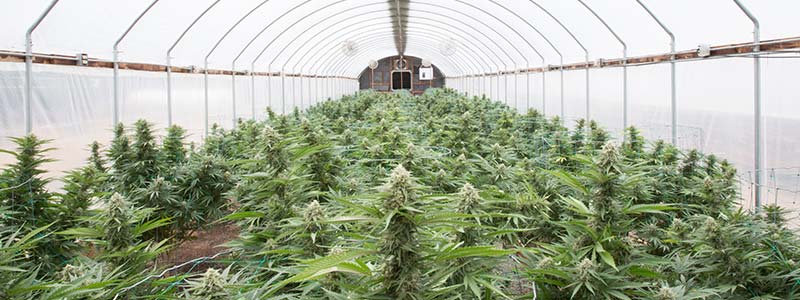
As both commercial and personal Cannabis and Hemp grows are spreading throughout the US, so comes the added risk of your plants receiving some of these undesirable problems. As they say, an ounce of prevention and prevent a pound of pain (or something like that).
Pollen:
Male hemp and cannabis pollen is NOT something you want ruining your hard earned work. Having a greenhouse in general gives you leaps and bounds more protection then outdoor growers. However, since pollen can travel for many many miles, extra precaution should be taken if you’re at all concerned about your neighbors. During the risky times of year (when male pollen would normally spread) it is essential to run the cannabis greenhouse as a sealed environment (doing so while keeping temperature and humidity under control is the hard part). Using an evaporative cooling wall and/or fogging system will actually trap and make pollen inert before it has time to get to your plants and has thus far been the best method we’ve seen available for the industry. Specialized pollen intake filters can also help in areas that need extra protection. As long as your intake air comes in clean, and there is no other source of air coming into the greenhouse – you will be safe from pollen.
Pests:
Pests and insects will often come in through your intakes, fans, and open sidewalls. Unlike pollen, you will need to protect your plants from pests year round . Using an anti-insect netting on your intakes and sidewalls will give you a big boost in keeping your cannabis greenhouse bug free, especially from larger pests, but even leaf miners and aphids can be blocked with a tight mesh. However, spider mites and other bugs can still be tracked into your greenhouse, sot is essential to have regular preventative pest spraying routines in place. This can be done with OMRI/Organic options via an automated overhead fogging system.
Pesticides:
Any cannabis greenhouse gower that cares about their buyers (hopefully all of y’all), and/or wants to sell their product to a licensed dispensary,will need to protect their plants from pesticides. Outdoor growers are in the worst position of any growing method as pesticides from neighboring farms can easily cross contaminate yours. Ensure you get to know your neighbors and when they spray, and ensure your greenhouse is prepared to run as a sealed environment during those times.



